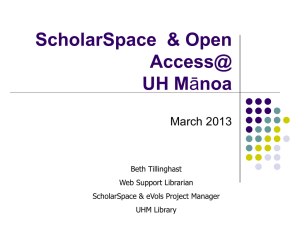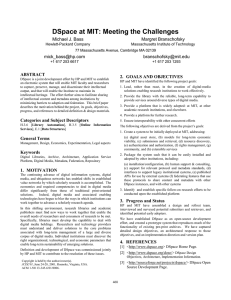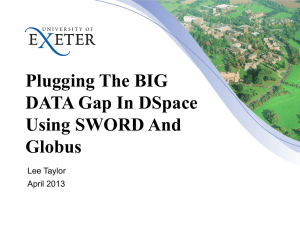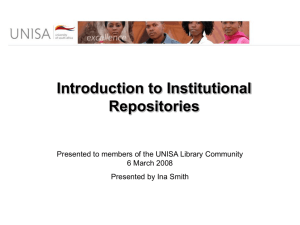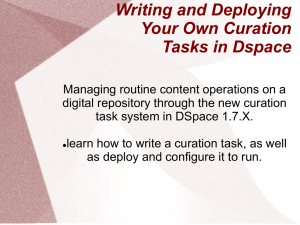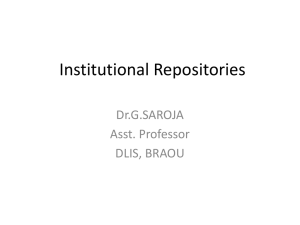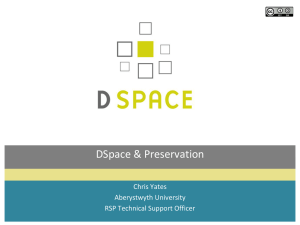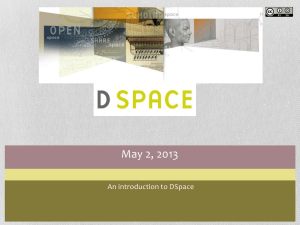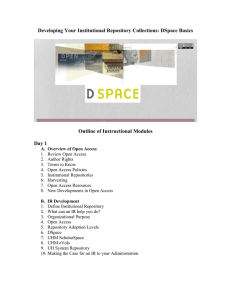Integration of DSpace with Computing Center Services
advertisement
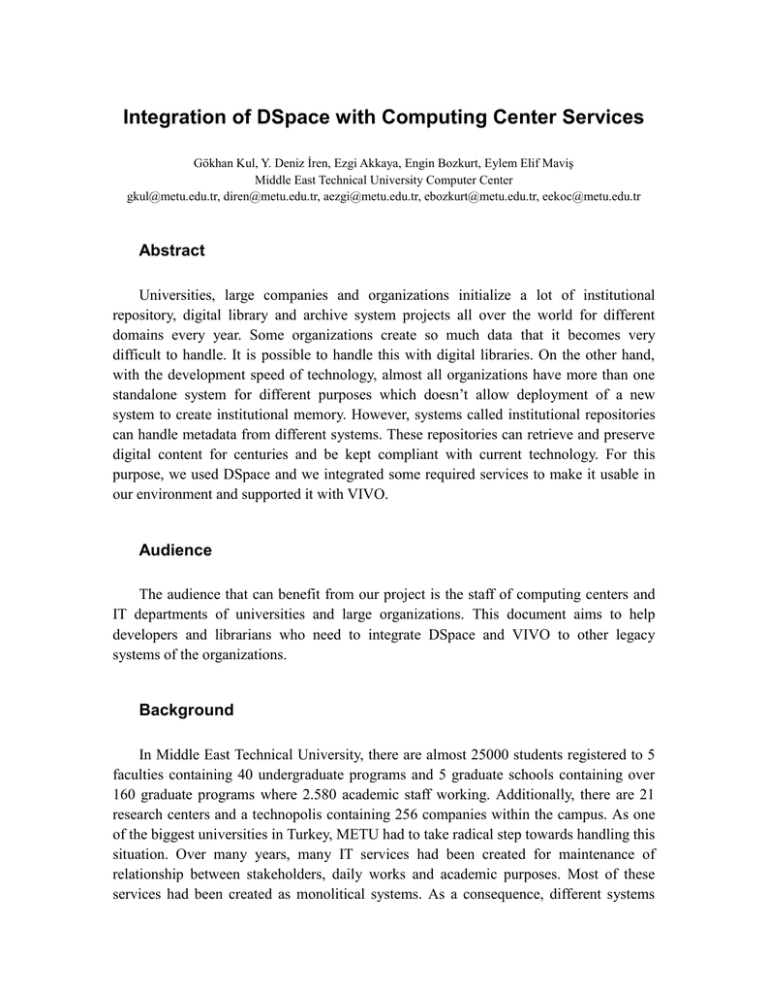
Integration of DSpace with Computing Center Services Gökhan Kul, Y. Deniz İren, Ezgi Akkaya, Engin Bozkurt, Eylem Elif Maviş Middle East Technical University Computer Center gkul@metu.edu.tr, diren@metu.edu.tr, aezgi@metu.edu.tr, ebozkurt@metu.edu.tr, eekoc@metu.edu.tr Abstract Universities, large companies and organizations initialize a lot of institutional repository, digital library and archive system projects all over the world for different domains every year. Some organizations create so much data that it becomes very difficult to handle. It is possible to handle this with digital libraries. On the other hand, with the development speed of technology, almost all organizations have more than one standalone system for different purposes which doesn’t allow deployment of a new system to create institutional memory. However, systems called institutional repositories can handle metadata from different systems. These repositories can retrieve and preserve digital content for centuries and be kept compliant with current technology. For this purpose, we used DSpace and we integrated some required services to make it usable in our environment and supported it with VIVO. Audience The audience that can benefit from our project is the staff of computing centers and IT departments of universities and large organizations. This document aims to help developers and librarians who need to integrate DSpace and VIVO to other legacy systems of the organizations. Background In Middle East Technical University, there are almost 25000 students registered to 5 faculties containing 40 undergraduate programs and 5 graduate schools containing over 160 graduate programs where 2.580 academic staff working. Additionally, there are 21 research centers and a technopolis containing 256 companies within the campus. As one of the biggest universities in Turkey, METU had to take radical step towards handling this situation. Over many years, many IT services had been created for maintenance of relationship between stakeholders, daily works and academic purposes. Most of these services had been created as monolitical systems. As a consequence, different systems had used the same data which was duplicated and changed within every system. To solve this problem along with many others, Integrated Information System project was launched in 2009. The decision to build a repository was made due to the lack of data integration between the legacy systems and as a result of the need to keep these systems online. However, we needed to integrate DSpace with the current Human Resources Management System, Central Authentication Service (CAS) first and then we could be able to integrate VIVO to DSpace to provide a semantic-based portfolio system for academic personnel of the university [1]. System Outline We call the integrated system we developed Knowledge Assets Library. It is a part of Integrated Information System and this library contains open and closed data defined as valuable to METU. It is basically a DSpace instance upgraded according to our requirements. Every metadata label defined in the vocabulary section is also a data type or object type property in the university ontology which is used by VIVO. The data stored in the DSpace database is harvested with a periodical script with VIVO Harvester according to the defined mapping between DSpace vocabulary and VIVO ontology [2]. DSpace is integrated to the Human Resources Management System (HRMS) and Central Authentication Service (CAS), so that we can control authorization and authentication of users without the need of a manual operation on DSpace. Figure 1: A simple overview of our system In this project, we explored the details of integration components and principles, how to integrate the systems, and worked on system architecture details. Conclusion Institutional repositories are usually designed to have flexible architectures and so that they can be integrated into very different and complex computing systems. This allows us to create ecosystems that contain different systems with different technologies and different jobs. In most of the cases, an institutional repository system like DSpace and Eprints cannot respond to your needs without any development effort and it requires you to develop new solutions for institution specific problems. In this project, we believe we solved a lot of problems regarding the system structure and architecture and we are looking forward to share our experiences. References [1] Shukair, Gofran; Loutas, Nikolaos; Peristeras, Vassilios; Sklarss, Sebestian; , “Towards semantically interoperable metadata repositories: The Asset Description Metadata Schema”, Computers in Industry 64 (2013) 10-18 [2] Sabou, Marta; Pan, Jeff; , “Towards semantically enhance web service repositories”, Web Semantics: Science, Services and Agents on the World Wide Web 5 (2007) 142-150
